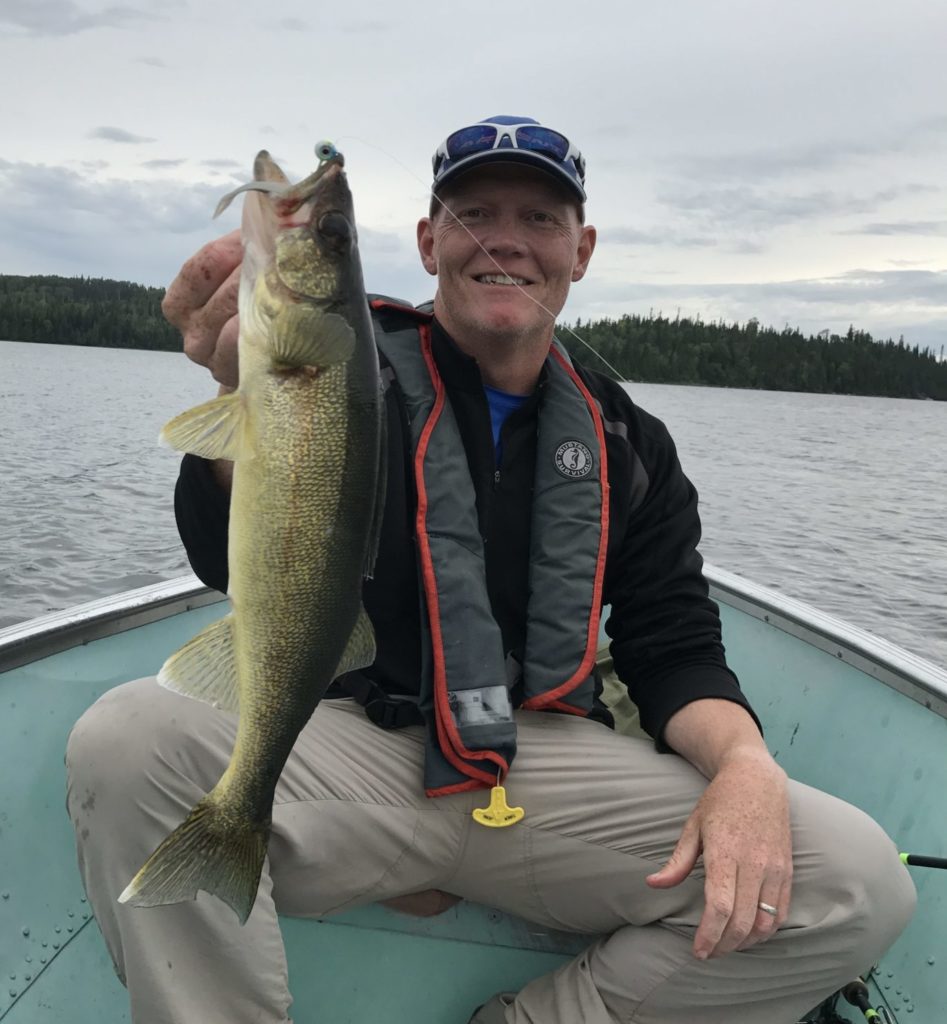 If you have ever been on a remote Canadian Fishing Trip, you know that expectations for the number and size of fish can be high, and often justifiably so. Having become somewhat of a veteran of remote lake fly-in fishing trips though the last number of years, I was left wanting after our annual spring trip turned out to be some of the slowest and toughest fishing I’d ever experienced. No fault to the lake or the outfitter, sometimes the season and the conditions just get the better of you! Rather than mope about it though, I was able to work with the outfitter, White River Air, to fit in a short 4-day late summer trip, with the hopes of better results. They were keen to ensure we had a great trip, and we were anxious for redemption.
If you have ever been on a remote Canadian Fishing Trip, you know that expectations for the number and size of fish can be high, and often justifiably so. Having become somewhat of a veteran of remote lake fly-in fishing trips though the last number of years, I was left wanting after our annual spring trip turned out to be some of the slowest and toughest fishing I’d ever experienced. No fault to the lake or the outfitter, sometimes the season and the conditions just get the better of you! Rather than mope about it though, I was able to work with the outfitter, White River Air, to fit in a short 4-day late summer trip, with the hopes of better results. They were keen to ensure we had a great trip, and we were anxious for redemption.
 We have flown on two previous occasions with White River Air, who have over 20 remote locations to choose from, ranging from rustic to luxurious. After much discussion about availability and the dates our party of two could travel, we decided on giving Bulldozer Lake a whirl. Like many of you, my brother (Chris) and I began pouring over any maps we could find, and searching for people who had previously fished the lake, preferably at a similar time of year. Any nugget of intel would be critical to help us make the most of a relatively short time on the lake. We didn’t find much in the way of information, and didn’t have much to go on, but we headed for White River, Ontario armed with the notes we gathered, our gear for 4 days, and a pretty positive attitude. It had been a number of years since we’d fished a northern lake in late August, but we were up for it. We had decided this trip was to be a “walleye” trip, meaning our intent was solely to target walleye, and hopefully reel in some numbers.
We have flown on two previous occasions with White River Air, who have over 20 remote locations to choose from, ranging from rustic to luxurious. After much discussion about availability and the dates our party of two could travel, we decided on giving Bulldozer Lake a whirl. Like many of you, my brother (Chris) and I began pouring over any maps we could find, and searching for people who had previously fished the lake, preferably at a similar time of year. Any nugget of intel would be critical to help us make the most of a relatively short time on the lake. We didn’t find much in the way of information, and didn’t have much to go on, but we headed for White River, Ontario armed with the notes we gathered, our gear for 4 days, and a pretty positive attitude. It had been a number of years since we’d fished a northern lake in late August, but we were up for it. We had decided this trip was to be a “walleye” trip, meaning our intent was solely to target walleye, and hopefully reel in some numbers.
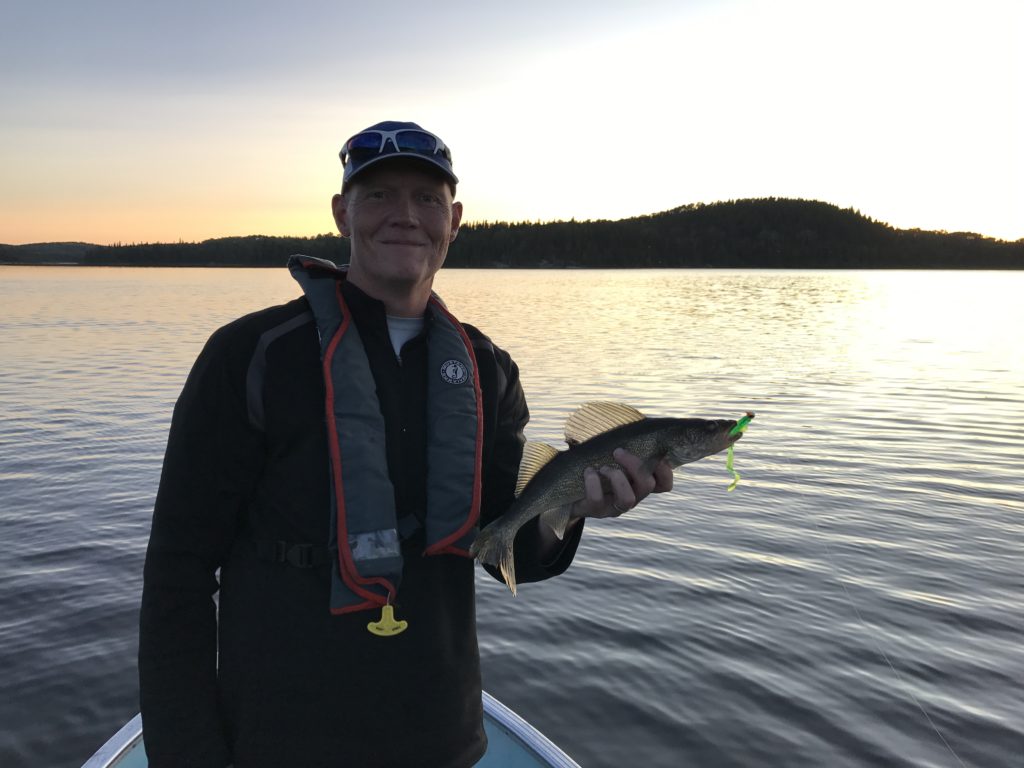 After driving through the night (we were short holiday days), we grabbed a couple hours of rest before heading to the now-familiar base located on Tukanee Lake. Upon arrival, we pulled down to the loading area and began putting our gear on the plane. With just the two of us, it was a small load and we were ready in no time. We headed to the main office to leave the keys and check in, and were met by owner Dan MacLachlan. We began chatting with Dan about how the season had been when we noticed Dan had not one, but TWO maps of different lakes on the desk. It’s customary for this outfitter to share a map of the lake so the guest at the very least has a general understanding of the water body. He looked at us and said the surprising words: “You have two lakes you can pick from. Bulldozer where you were planning to go, or Jembi Lake which is also available.” As much as it’s nice to have options, we had no intel on Jembi, not even an idea on the size or make-up of the lake. Dan reported that both were excellent, but that Jembi had been a very consistent lake for them the past few years. Well, this is the type of opportunity that adventures are made from, so we chose to go old school and just show up at Jembi. We headed down to the plane and told the pilot, “Change of plans, take us to Jembi,” and without further ado we were up in the air.
After driving through the night (we were short holiday days), we grabbed a couple hours of rest before heading to the now-familiar base located on Tukanee Lake. Upon arrival, we pulled down to the loading area and began putting our gear on the plane. With just the two of us, it was a small load and we were ready in no time. We headed to the main office to leave the keys and check in, and were met by owner Dan MacLachlan. We began chatting with Dan about how the season had been when we noticed Dan had not one, but TWO maps of different lakes on the desk. It’s customary for this outfitter to share a map of the lake so the guest at the very least has a general understanding of the water body. He looked at us and said the surprising words: “You have two lakes you can pick from. Bulldozer where you were planning to go, or Jembi Lake which is also available.” As much as it’s nice to have options, we had no intel on Jembi, not even an idea on the size or make-up of the lake. Dan reported that both were excellent, but that Jembi had been a very consistent lake for them the past few years. Well, this is the type of opportunity that adventures are made from, so we chose to go old school and just show up at Jembi. We headed down to the plane and told the pilot, “Change of plans, take us to Jembi,” and without further ado we were up in the air.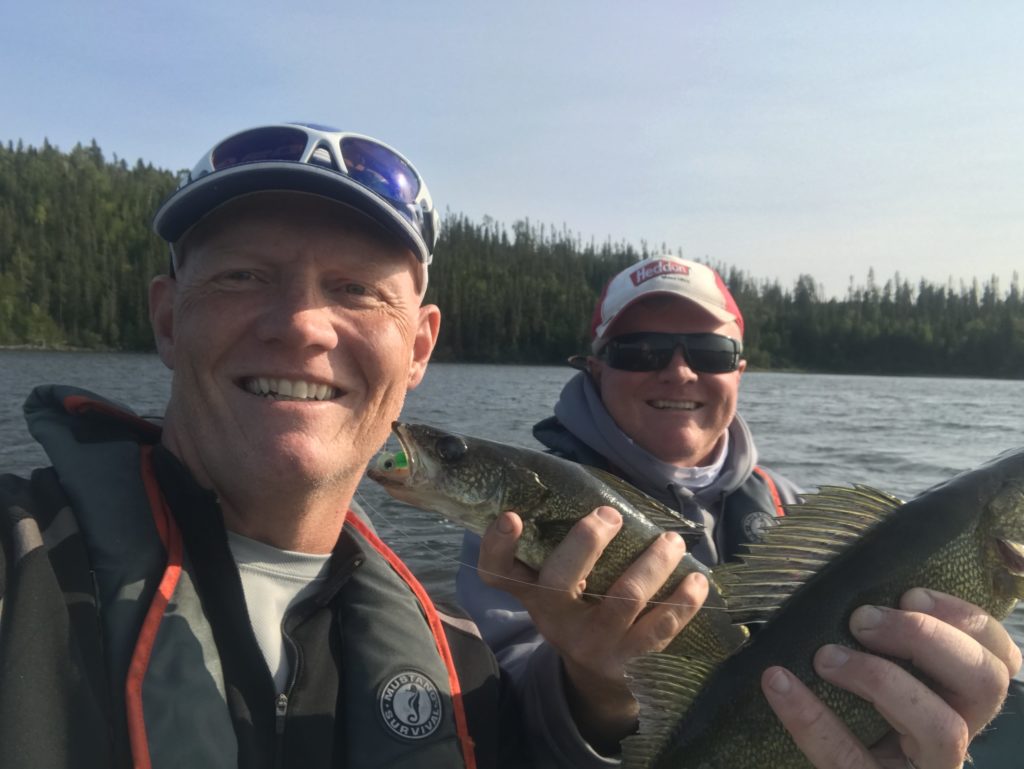
Jembi Lake is long and narrow (5 miles by 1 mile). Our cabin was small, with electric lights, but no running water. Chris and I have no issue with rustic camps. An outhouse and a shower in the lake won’t cause us to bat an eye; we want fish! The cabin, which is the only one on the lake, is located on a point on the north east side of the lake, on one of the prettiest locations I’ve seen. The lake is relatively shallow – I think the deepest hole we found was less than 40 feet. The north and south ends are shallow and flat (good spring locations), with the main body of the lake having good islands and rock structure to work. No surprises on the lake, you can drive it with confidence! Our cabin had a surprise, though. How many cabins have you been to that have resident Bald Eagles to greet you throughout the day? The video below will give you a taste of what that was like. Enjoy.
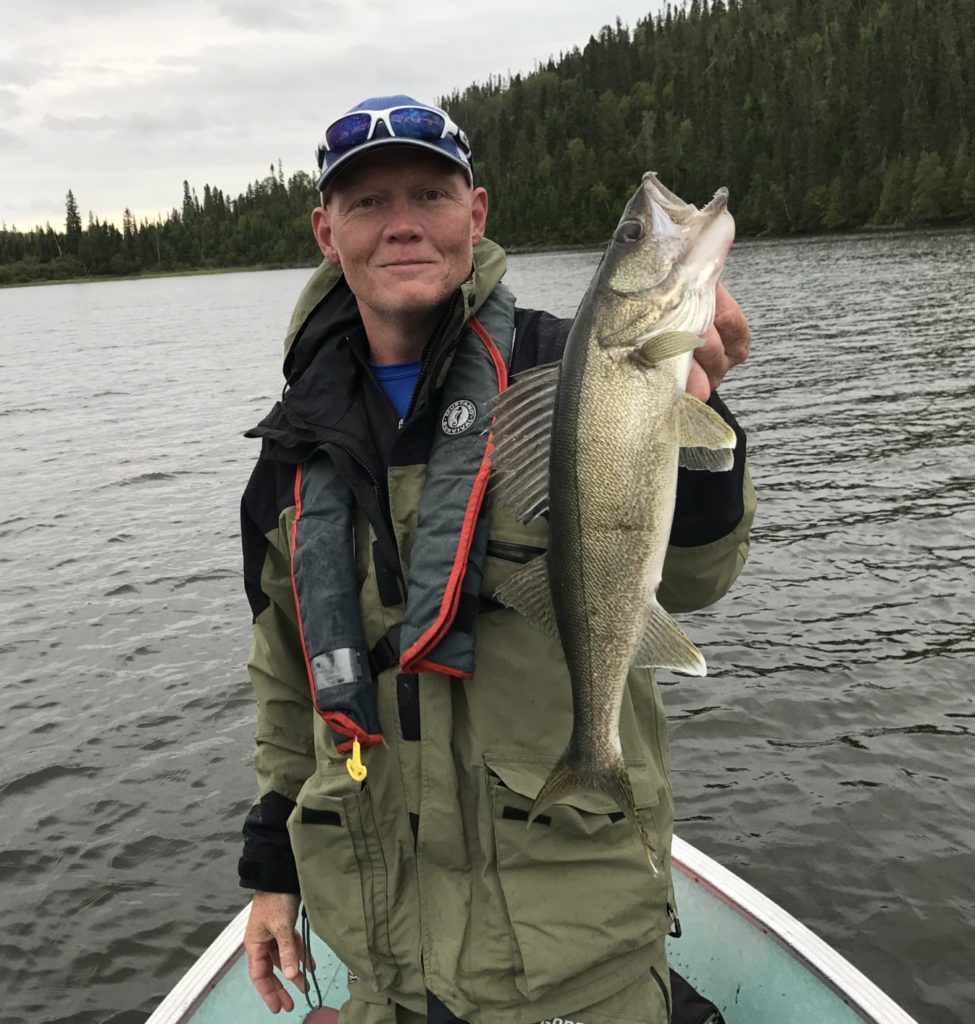 After landing and unloading, the plane was off to it’s next destination and we were settling in. Once you have been on a few of these trips you get into the routine pretty quickly and in less than 30 minutes we were completely unpacked, boat ready, rods rigged, and off to our first spot. With no prior research, we planned to keep it simple and work rock piles, islands, weed edges and any drop-offs we could locate. On one of my first few casts into some scattered weeds I missed a solid strike and then had a follow from a nice walleye. Moving closer to some rocks I had 4 fish on the next 4 casts, surprisingly 3 pike and a walleye that would become dinner. So the rest of the morning continued with us trying high probability spots, but not spending too much time in any one location. The goal was to locate as many spots as we could, and then start working them later in the day. That goal was met, as we did in fact find them, and rest assured, we worked them.
After landing and unloading, the plane was off to it’s next destination and we were settling in. Once you have been on a few of these trips you get into the routine pretty quickly and in less than 30 minutes we were completely unpacked, boat ready, rods rigged, and off to our first spot. With no prior research, we planned to keep it simple and work rock piles, islands, weed edges and any drop-offs we could locate. On one of my first few casts into some scattered weeds I missed a solid strike and then had a follow from a nice walleye. Moving closer to some rocks I had 4 fish on the next 4 casts, surprisingly 3 pike and a walleye that would become dinner. So the rest of the morning continued with us trying high probability spots, but not spending too much time in any one location. The goal was to locate as many spots as we could, and then start working them later in the day. That goal was met, as we did in fact find them, and rest assured, we worked them.
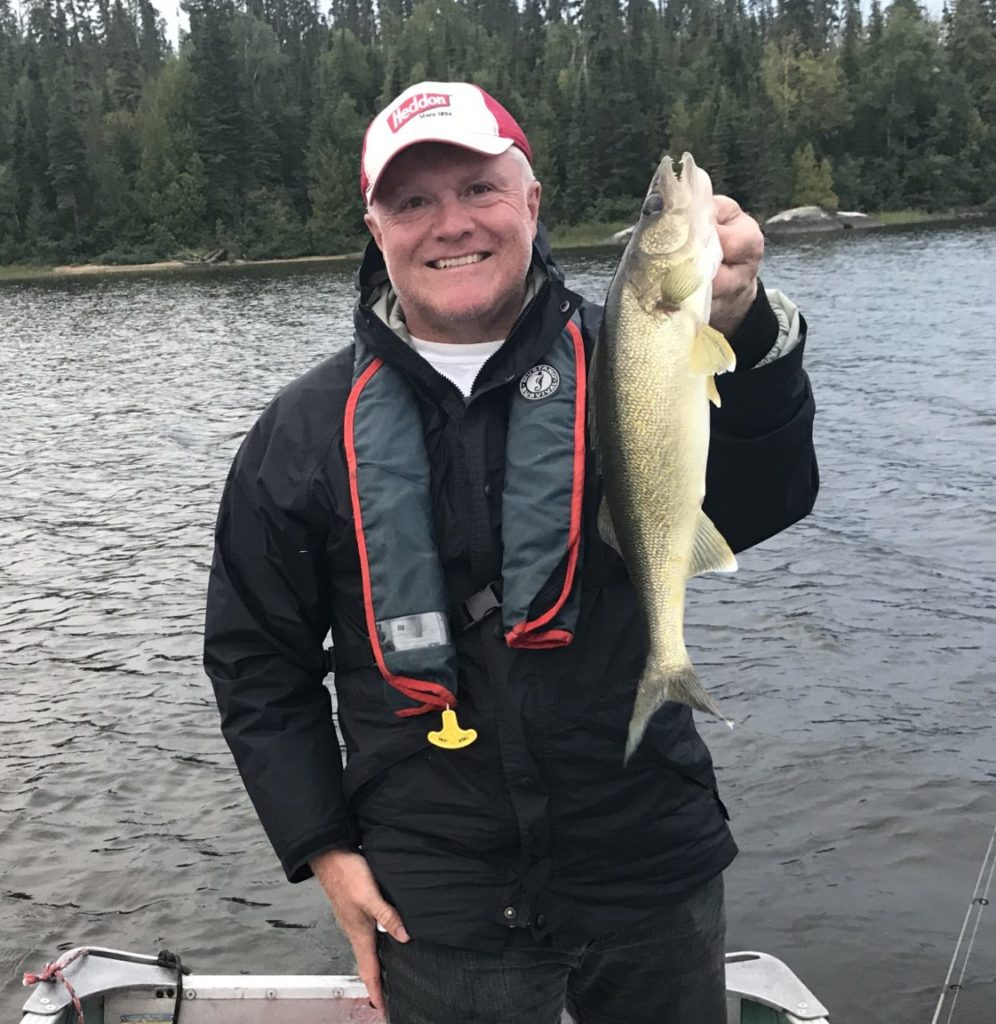 In each of the trips I have been on, I’ve had a pretty good idea of how many fish we have caught as a group, and my individual take, but this time Chris and I wanted to really count how many fish we caught. Experience told us that people (including likely us) have a tendency to overestimate how many fish they catch, which can lead to people having unrealistic expectations of their trip. Even on remote lakes with little pressure, you still have to put your time in, and work for your fish. The difference is that these lakes can be far more rewarding from a quality and quantity standpoint. If you are interested in the specifics, send me a note, but suffice it to say that we caught more fish in 3.5 days than we usually catch in 7 days, and our average size was excellent.
In each of the trips I have been on, I’ve had a pretty good idea of how many fish we have caught as a group, and my individual take, but this time Chris and I wanted to really count how many fish we caught. Experience told us that people (including likely us) have a tendency to overestimate how many fish they catch, which can lead to people having unrealistic expectations of their trip. Even on remote lakes with little pressure, you still have to put your time in, and work for your fish. The difference is that these lakes can be far more rewarding from a quality and quantity standpoint. If you are interested in the specifics, send me a note, but suffice it to say that we caught more fish in 3.5 days than we usually catch in 7 days, and our average size was excellent.
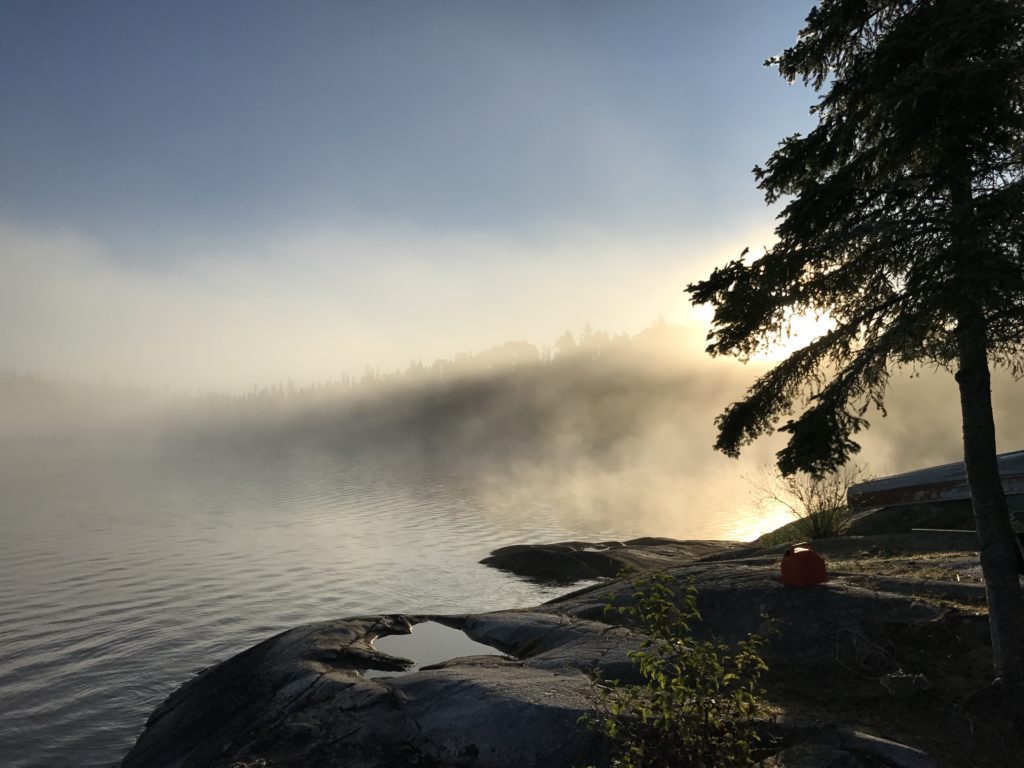 Our first couple days were more productive than our last two, but the weather changed and the stable weather we had been enjoying turned the fish off somewhat. Our first two days were warm with a good amount of sun, but an even better amount of wind. Fortunately for us, Chris is pretty much a human Talon when he’s faced with wind, and we were able to sit right on top of the most productive locations. The evenings calmed right down and we were able to fish glass-like conditions, with great clarity to see those depth changes. Jembi has clear water, not tea stained like some of the surrounding lakes.
Our first couple days were more productive than our last two, but the weather changed and the stable weather we had been enjoying turned the fish off somewhat. Our first two days were warm with a good amount of sun, but an even better amount of wind. Fortunately for us, Chris is pretty much a human Talon when he’s faced with wind, and we were able to sit right on top of the most productive locations. The evenings calmed right down and we were able to fish glass-like conditions, with great clarity to see those depth changes. Jembi has clear water, not tea stained like some of the surrounding lakes.
 Our third day was a real change, with cloud and heavy fog that gave way to rain. It was mid morning and you could still only see 20 feet in front of you. With the change in conditions also came a steady drop in temperature, which began to affect the bite. It also affected the time was had to fish, as we had to allocate a chunk to gather firewood and prepare for what we knew would be a cold night. The fishing was still good, but the violent strikes we had on the first two days were replaced with the subtle bite of a fish taking a plastic minnow resting on the bottom. Plastics in August? Yup, not only was this a walleye-only trip, but we were also committed to using only artificial lures, no live bait at all. If you are curious, what we used about 75% of the time was either a 1/4 or 1/8 oz jig (VMC Moon Eye) tipped with a Authentix Moxie. Next up was the same jig but with a 3 inch Gulp Emerald Shiner. We’d jig them, cast them, troll them, drag them, whatever it took to elicit a bite, and they worked!
Our third day was a real change, with cloud and heavy fog that gave way to rain. It was mid morning and you could still only see 20 feet in front of you. With the change in conditions also came a steady drop in temperature, which began to affect the bite. It also affected the time was had to fish, as we had to allocate a chunk to gather firewood and prepare for what we knew would be a cold night. The fishing was still good, but the violent strikes we had on the first two days were replaced with the subtle bite of a fish taking a plastic minnow resting on the bottom. Plastics in August? Yup, not only was this a walleye-only trip, but we were also committed to using only artificial lures, no live bait at all. If you are curious, what we used about 75% of the time was either a 1/4 or 1/8 oz jig (VMC Moon Eye) tipped with a Authentix Moxie. Next up was the same jig but with a 3 inch Gulp Emerald Shiner. We’d jig them, cast them, troll them, drag them, whatever it took to elicit a bite, and they worked!
 We managed double headers on every day, and good numbers and size of fish. The only thing that changed was the techniques we had to employ to get the fish to bite. Our most productive locations won’t surprise you, they were a small rock island with a nice feeding flat on three sides and a sharp drop off, a rock pile surrounded with a variety of boulders creating great depth changes, and a large island with a series of rises and drop-offs that was great to troll. While we caught fish in most of the areas we worked, these became our “go to” spots.
We managed double headers on every day, and good numbers and size of fish. The only thing that changed was the techniques we had to employ to get the fish to bite. Our most productive locations won’t surprise you, they were a small rock island with a nice feeding flat on three sides and a sharp drop off, a rock pile surrounded with a variety of boulders creating great depth changes, and a large island with a series of rises and drop-offs that was great to troll. While we caught fish in most of the areas we worked, these became our “go to” spots.
Our final day was the slowest as far as numbers go, but when I say that, keep in mind it was still really excellent fishing. The temperature stayed low, as well as the winds, so we were missing a few key ingredients. We were also beginning to shift to trying other types of plastics, jigs and overall techniques, just because we knew there were fish to be had, and it was a great time to practice new ways to catch them. The most productive method later in the week was often a 1/8 oz jig tipped with a 3in shiner minnow. We’d make a short cast, and slowly drag it back to the boat. If it didn’t get picked up on the retrieve, we’d simply leave it on the bottom and occasionally check to see if a walleye had picked it up. The boat drift would help us re-position. While not an exciting method for some, it did produce some of our larger walleye.
As our final day came to an end, it was a really great feeling to be heading in knowing that you’d met your goal. We had caught a lot of walleye, a lot of different ways, but we’d also enjoyed was was our first fishing trip alone together. We could have really gotten on each other’s nerves, but we really had a great time together, and that alone was worth the trip.
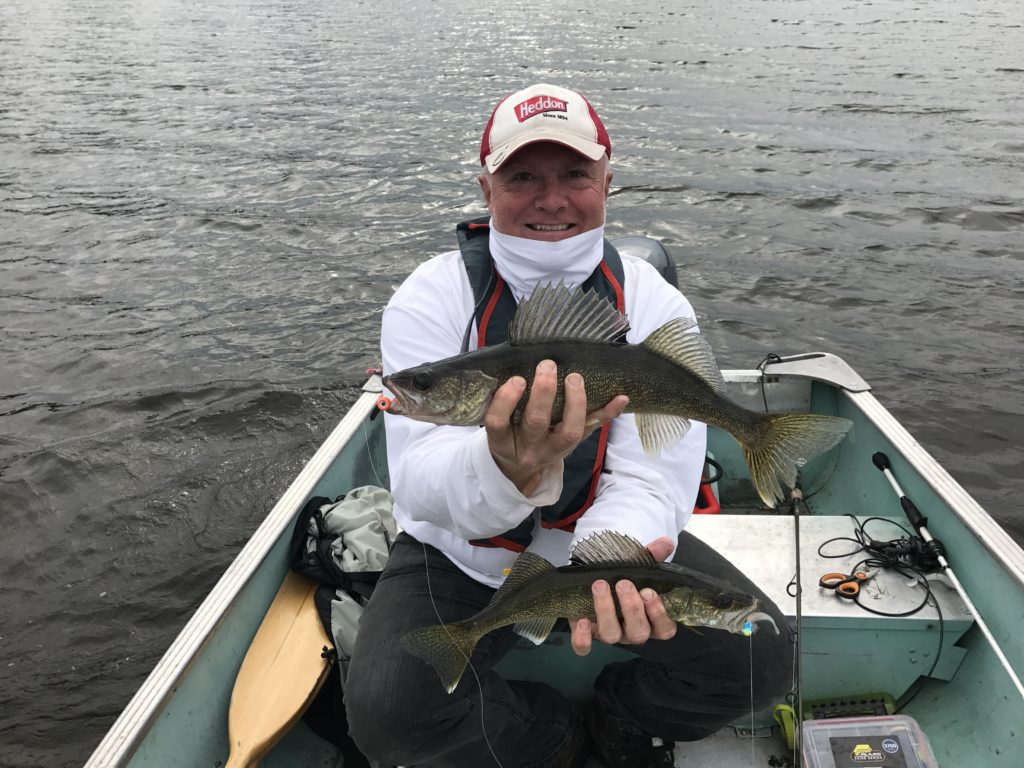 We finished up our last dinner and began to pack up. The cabin itself has a wood stove that really throws heat, a propane fridge and stove, and a huge table to eat at. Of course all the pots / pans / utensils were on site. One thing we did note was that the cabin was not really clean when we arrived. Now, this is NOT a shot at the outfitter, because it’s up to each group to leave the camp in good shape for the next group coming in. On your next trip, pay it forward by leaving your camp even better than you found it so the next group has a great time. The boats we used were standard 14ft aluminum with small 4 strokes. They ran well, and sipped the gas. The location of the cabin, with a lot of great rock and beautiful views, was a real luxury. Here is a video of the camp and cabin.
We finished up our last dinner and began to pack up. The cabin itself has a wood stove that really throws heat, a propane fridge and stove, and a huge table to eat at. Of course all the pots / pans / utensils were on site. One thing we did note was that the cabin was not really clean when we arrived. Now, this is NOT a shot at the outfitter, because it’s up to each group to leave the camp in good shape for the next group coming in. On your next trip, pay it forward by leaving your camp even better than you found it so the next group has a great time. The boats we used were standard 14ft aluminum with small 4 strokes. They ran well, and sipped the gas. The location of the cabin, with a lot of great rock and beautiful views, was a real luxury. Here is a video of the camp and cabin.
There are a ton of outfitters in Ontario, but they are not all equal. White River Air really is a superior company, and you can not go wrong with any of their lakes. If you have any questions, feel free to reach out to scott@canadianfisherman.ca. As always don’t forget, to sign up and have my most recent post sent right to you!